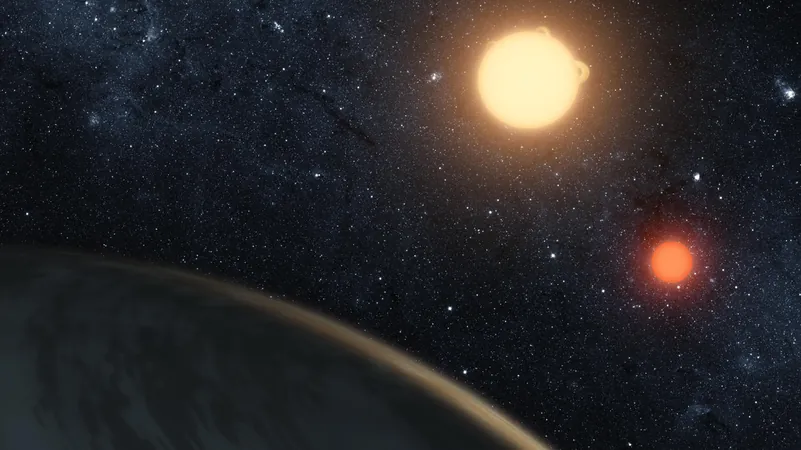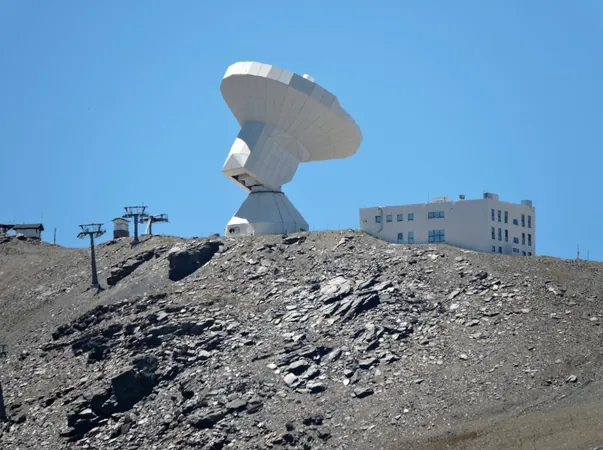
NASA Confirms: Desert Worlds Like 'Dune' and 'Star Wars' Are Not Ideal for Life!
2025-01-06
Author: Nur
NASA Confirms Unfavorable Conditions of Desert Worlds for Life
In an astonishing revelation that could dash the dreams of science fiction fans everywhere, NASA scientists have concluded that the arid planets portrayed in beloved franchises like "Dune" and "Star Wars" are unlikely to host alien life. Drawing from groundbreaking research presented at the American Geophysical Union's 2024 conference, this study emphasizes the harsh realities of extraterrestrial environments.
The Myth of Life on Arrakis
The desert planet Arrakis, famously teeming with ferocious sandworms in "Dune," is a prime example of how unrealistic these fictional worlds may be when it comes to sustaining life. While authors have long conjured images of vibrant ecosystems thriving on parched worlds, new data suggests that even planets sitting prettily within habitable zones, where conditions seem just right for liquid water, may struggle to support any form of life.
The Water Stability Threshold
The research indicates that desert planets lose their water through aggressive processes that make climate stability elusive. As Haskelle Trigue White-Gianella, a Ph.D. candidate from the University of Washington, pointed out: "There's a specific threshold of water required to keep a planet's climate stable. If it dips below that, life as we know it can't survive."
Comparing Earth and Desert Planets
The study reveals stark contrasts between Earth-like planets and those with limited water resources. Earth, with its abundant oceans, has maintained a stable climate for approximately 4.5 billion years. In contrast, planets with scant water tend to experience dramatic climate shifts leading to potential lifeless states. This could create a vicious cycle where the depletion of water disrupts the carbon cycle, exacerbating climate change — a fate some suggest befell Venus, which once may have nurtured oceans but is now a blistering wasteland.
Creative Limitations of Sci-Fi Landscapes
The implications of this research extend beyond the pages of science fiction. Iconic creatures like Jawas and Tusken Raiders from "Star Wars," who inhabit Tatooine's sun-baked expanse, may never have had a chance to evolve on such harsh landscapes, as the severe drying out of planets poses insurmountable barriers to life.
Reflections on Planetary Evolution
Moreover, the team's findings raise important questions about our understanding of desertification and planetary evolution. While Mars has showcased dune fields reminiscent of deserts, it does not fully align with the dusty environments characterized in narratives like "Dune." Likewise, Saturn's intriguing moon Titan, swathed in organic sandy formations, remains a mystery, but NASA's upcoming "Dragonfly" mission in 2028 may finally shed light on its potential for supporting life.
The Future of Interstellar Exploration
As fans of space opera and fantasy grapple with this sobering information, it's important to remember that our concepts of extraterrestrial life are often drawn from terrestrial experiences. The study's lead researchers caution that our understanding is still nascent, pointing out that the genesis of desert-related life forms is anything but fully comprehended.
The Reality of Sci-Fi Worlds
In the murky realms of speculative fiction, can we ever uncover true futures for these fantastical societies? "These types of sci-fi fiction worlds are probably not real," White-Gianella lamented, bringing a sense of reality crashing down on avid followers of remarkables like "Dune" and "Star Wars."
Reconsidering Alien Life Possibilities
So, what does this mean for our dreams of interstellar adventures and alien encounters? While the universes created by visionary authors spark the imagination, science is urging us to reconsider the viability of desert worlds for sustaining life. What perspectives will future explorations yield when we finally pierce the fabric of these distant realities? The answers remain deeply interwoven in the quest for understanding our cosmic neighborhood!


 Brasil (PT)
Brasil (PT)
 Canada (EN)
Canada (EN)
 Chile (ES)
Chile (ES)
 Česko (CS)
Česko (CS)
 대한민국 (KO)
대한민국 (KO)
 España (ES)
España (ES)
 France (FR)
France (FR)
 Hong Kong (EN)
Hong Kong (EN)
 Italia (IT)
Italia (IT)
 日本 (JA)
日本 (JA)
 Magyarország (HU)
Magyarország (HU)
 Norge (NO)
Norge (NO)
 Polska (PL)
Polska (PL)
 Schweiz (DE)
Schweiz (DE)
 Singapore (EN)
Singapore (EN)
 Sverige (SV)
Sverige (SV)
 Suomi (FI)
Suomi (FI)
 Türkiye (TR)
Türkiye (TR)
 الإمارات العربية المتحدة (AR)
الإمارات العربية المتحدة (AR)